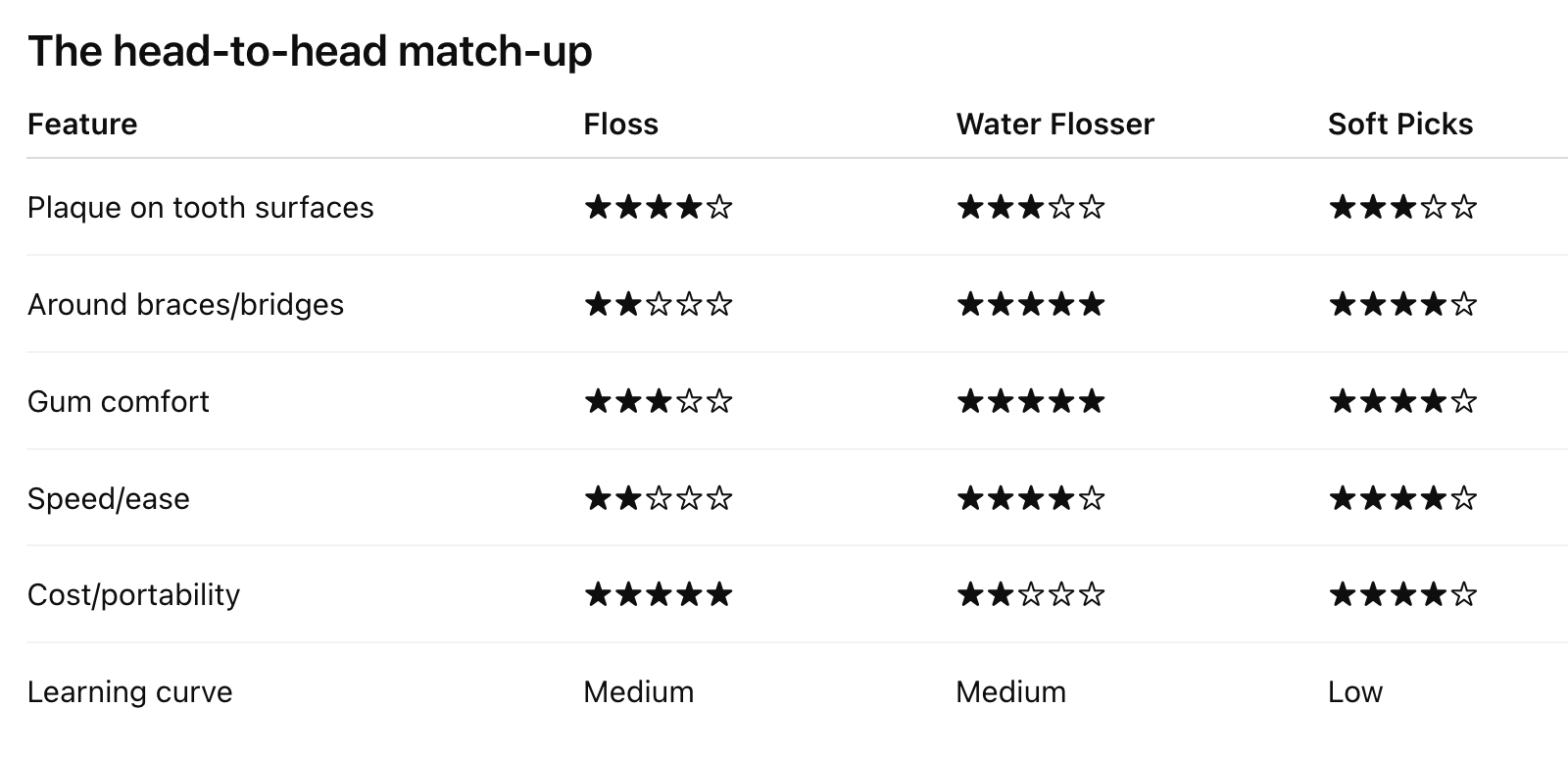You brush twice a day, but the spaces between your teeth still feel sticky or trap food? That’s where interdental cleaning comes in. At iSmile Dental in Langley, we help patients choose a tool they’ll actually use—because consistency beats perfection. In this friendly guide, we compare floss, water flossers, and soft picks so you can pick the winner for your real life. If you’re searching “dentist near me” or a trusted Langley dentist, here’s your straight-talk playbook.
The “winner” is the one you’ll do 5–7 days a week. That’s it.
Toothbrush bristles don’t fully reach tight contacts. Plaque left in those seams hardens into tartar, irritates gums, and can spark cavities and bad breath. Clean between your teeth daily and you’ll notice:
How it works: Slide floss between teeth, curve it into a C around each tooth, and move up+down a few strokes.
Pros
Cons
Best for: People without braces who want maximum control. If you already floss well, keep going—you’re winning.
Mini coaching: Use waxed floss for tight teeth. Slide gently (don’t snap), hug one tooth, then the neighbor. 5–7 strokes each. If nights are hard, try right after lunch. Done is better than perfect.
How it works: A pressurized water stream flushes plaque and food from between teeth and along the gumline.
Pros
Cons
Best for: Orthodontic patients, people with gum inflammation, busy parents, gadget lovers.
How to start: Begin on low pressure, lean over the sink, keep lips slightly closed, and trace the gumline tooth by tooth. Aim just under the gum edge. Takes a minute, literally.
How it works: Tiny rubber picks or small cylindrical brushes that slide between teeth to wipe plaque off the sides.
Pros
Cons
Best for: Anyone who dislikes floss but wants clean contacts, or folks with mild recession who want a gentler feel.
Pro tip: Ask us to size you. The right diameter is everything. Wrong size is the #1 reason people give up.

Stars are general—your mouth, your mileage. Ask your Langley dentist for a quick chairside demo and we’ll tailor it to you.
Remember, the “best” tool is the one you’ll use when you’re tired, traveling, or running late. Consistency > equipment.
Days 1–3: Water flosser nightly, low pressure, 60 sec.
Days 4–6: Add soft picks for the front teeth after dinner.
Days 7–8: Try floss on just one quadrant (upper right).
Days 9–10: Floss two quadrants; water floss everything.
After day 10: Pick your favorite for daily use, and keep the others as backups.
If you miss a day, don’t quit. Start again tomorrow. Habits are built on re-starts, not perfection.
Do I need mouthwash too?
Optional. It freshens breath, but it doesn’t replace physical plaque removal. If your mouth is dry, pick alcohol-free.
My teeth are super tight—what now?
Try waxed floss or PTFE tape, and a water flosser for the back molars. We can show you a technique that won’t shred.
Is a water flosser enough by itself?
For many with braces or gum issues, yes, especially if used daily and slow. Some people still benefit from adding floss a few times a week. We’ll personalize it.
Are soft picks safe for gums?
Yes—when sized correctly and used gently. No sawing. Think “wiping the sides,” not stabbing.
How soon should bleeding stop?
Often within 7–14 days of steady cleaning. If bleeding is heavy, painful, or lingers, book with our Langley dentist team.
We’ll check your gum health, show you a 2-minute technique that fits your mouth, and help you choose tools that match your routine and budget—no pressure, no lectures.
There isn’t a single champion for everyone. Floss gives precision, water flossers give speed and comfort, soft picks give you something you’ll actually do on busy nights. Pick one, use it daily, and your smile (and next cleaning) will thank you. If you’re searching “dentist near me” for a quick, friendly tune-up, iSmile Dental in Langley has your back.